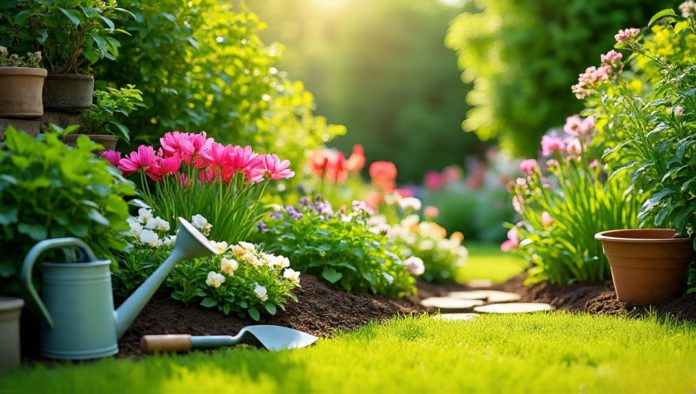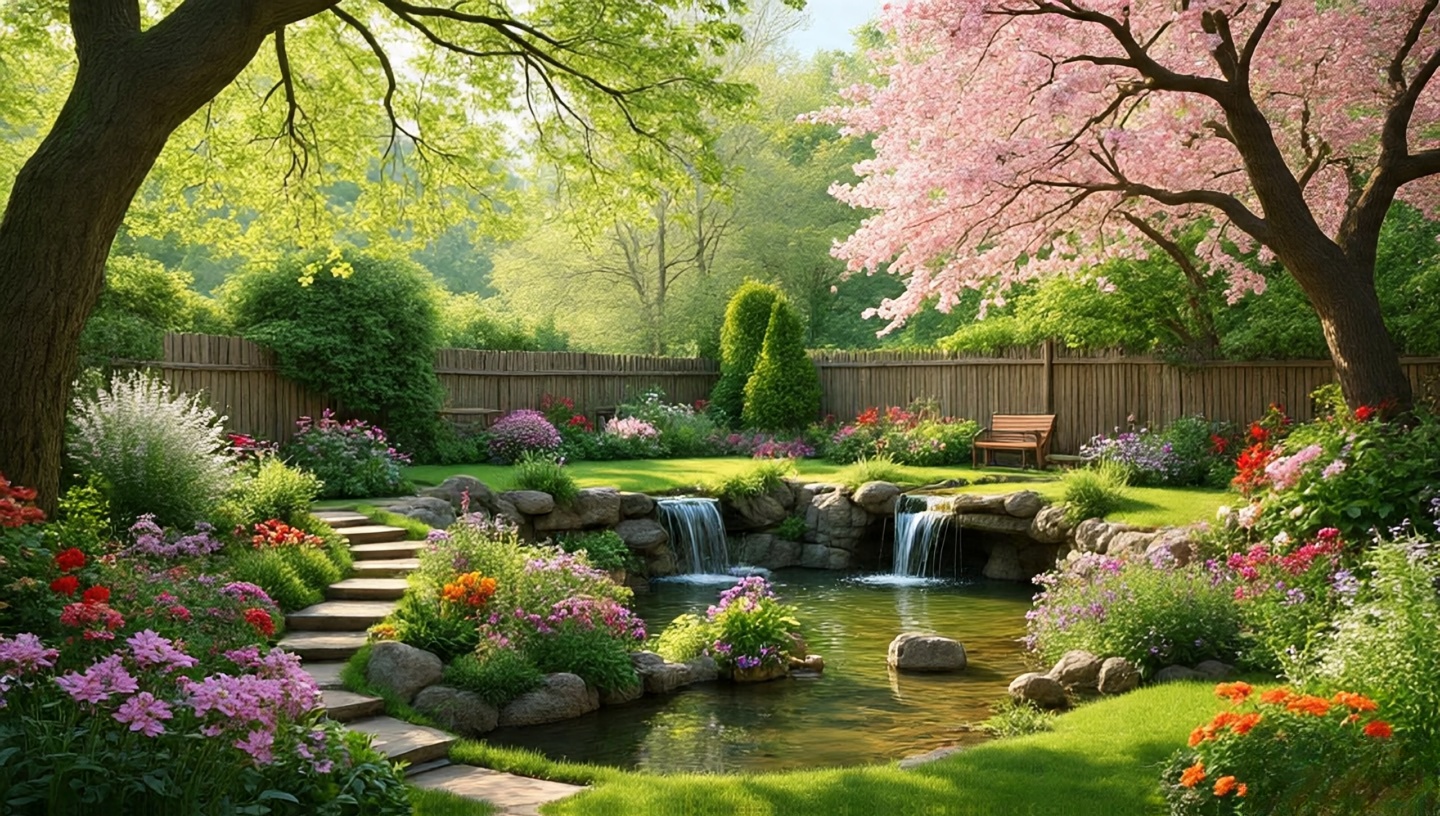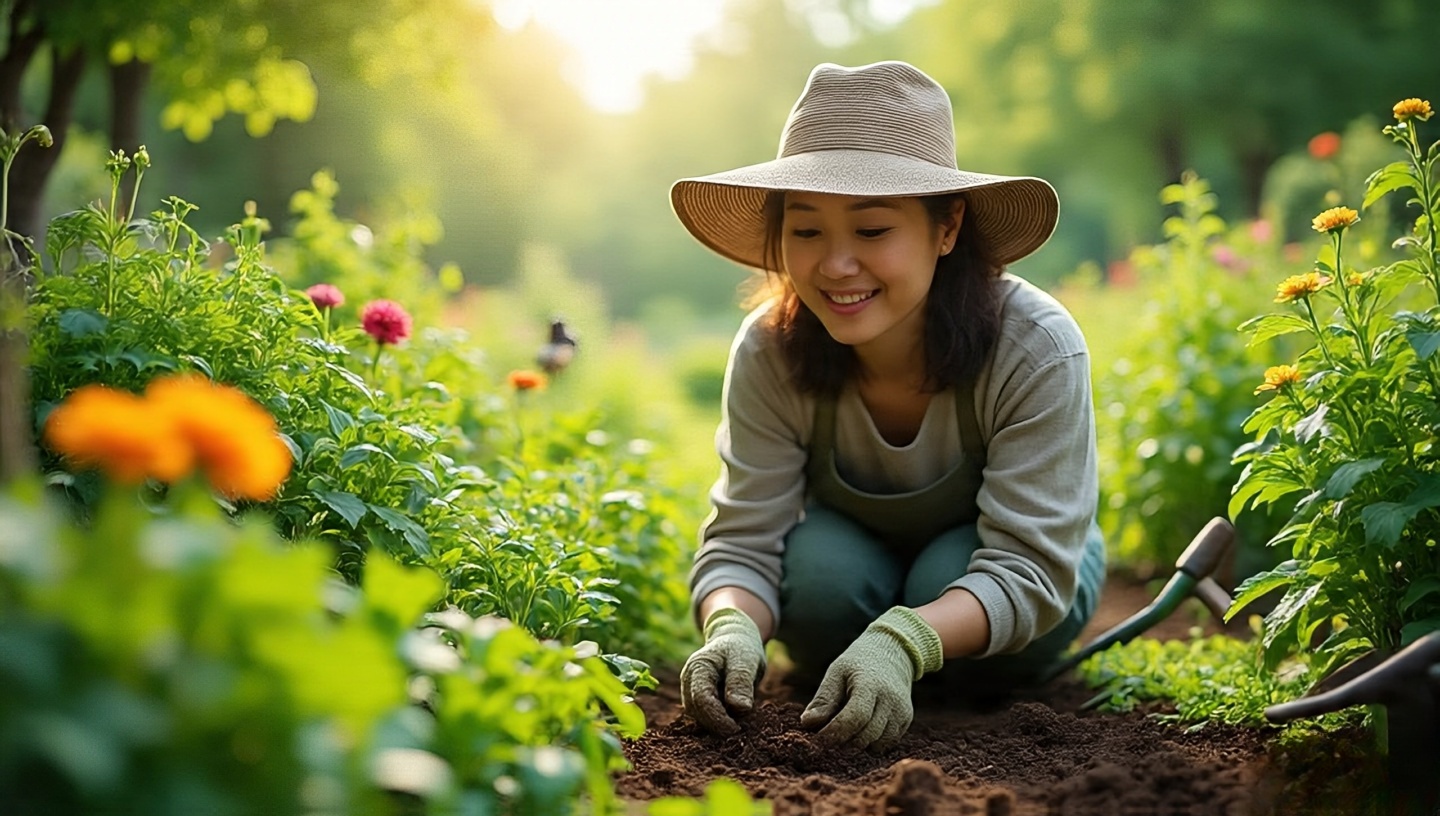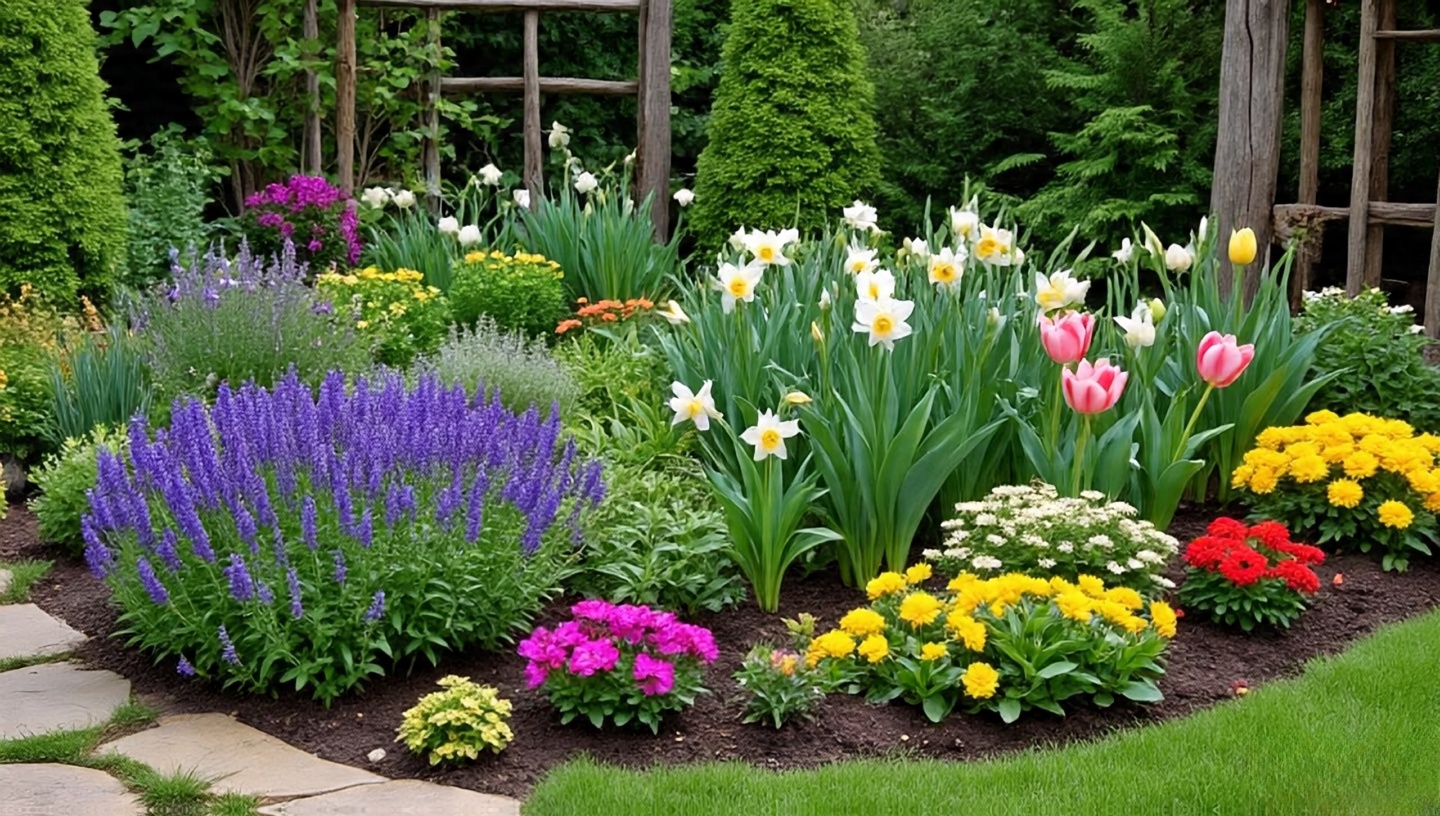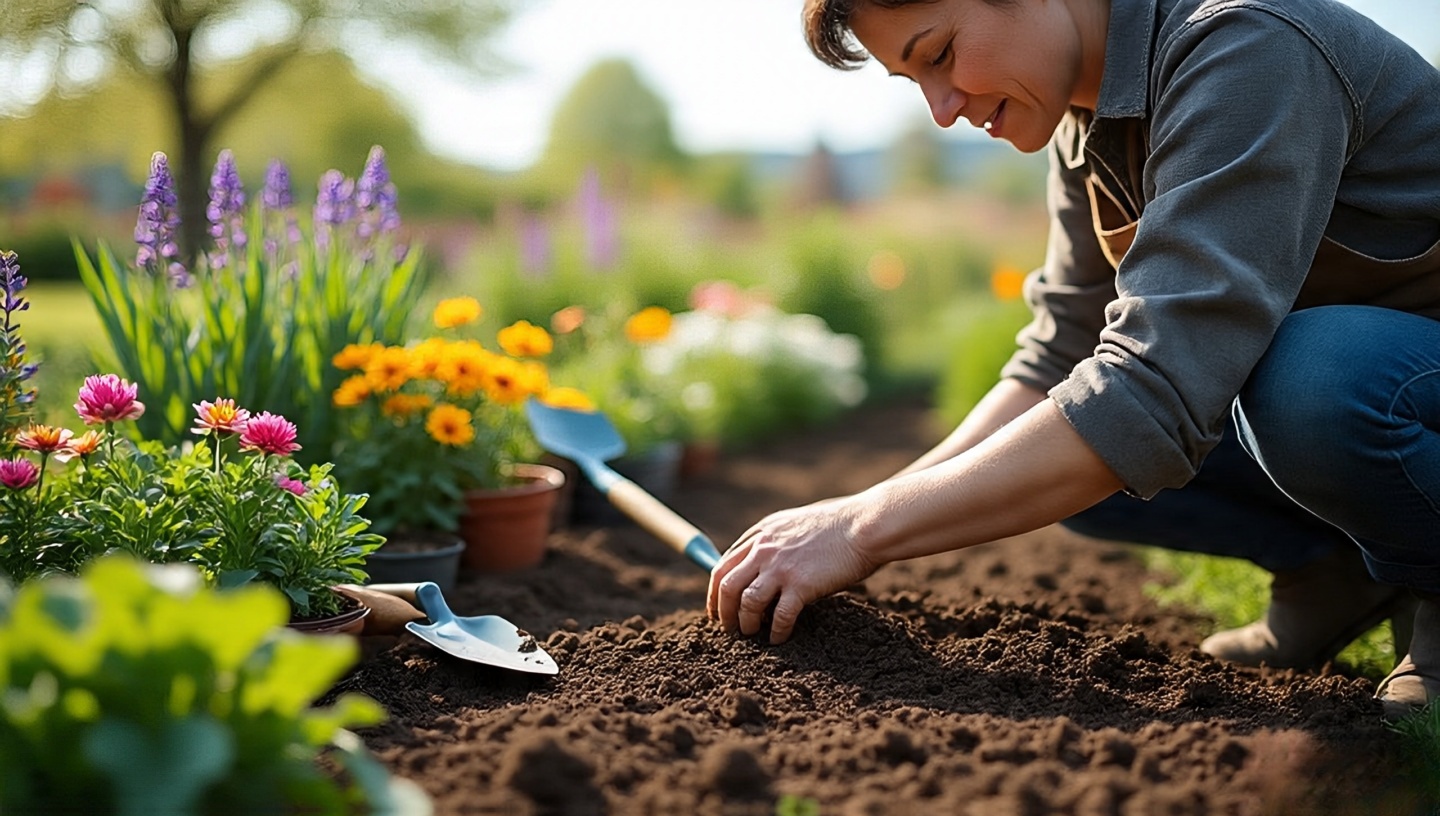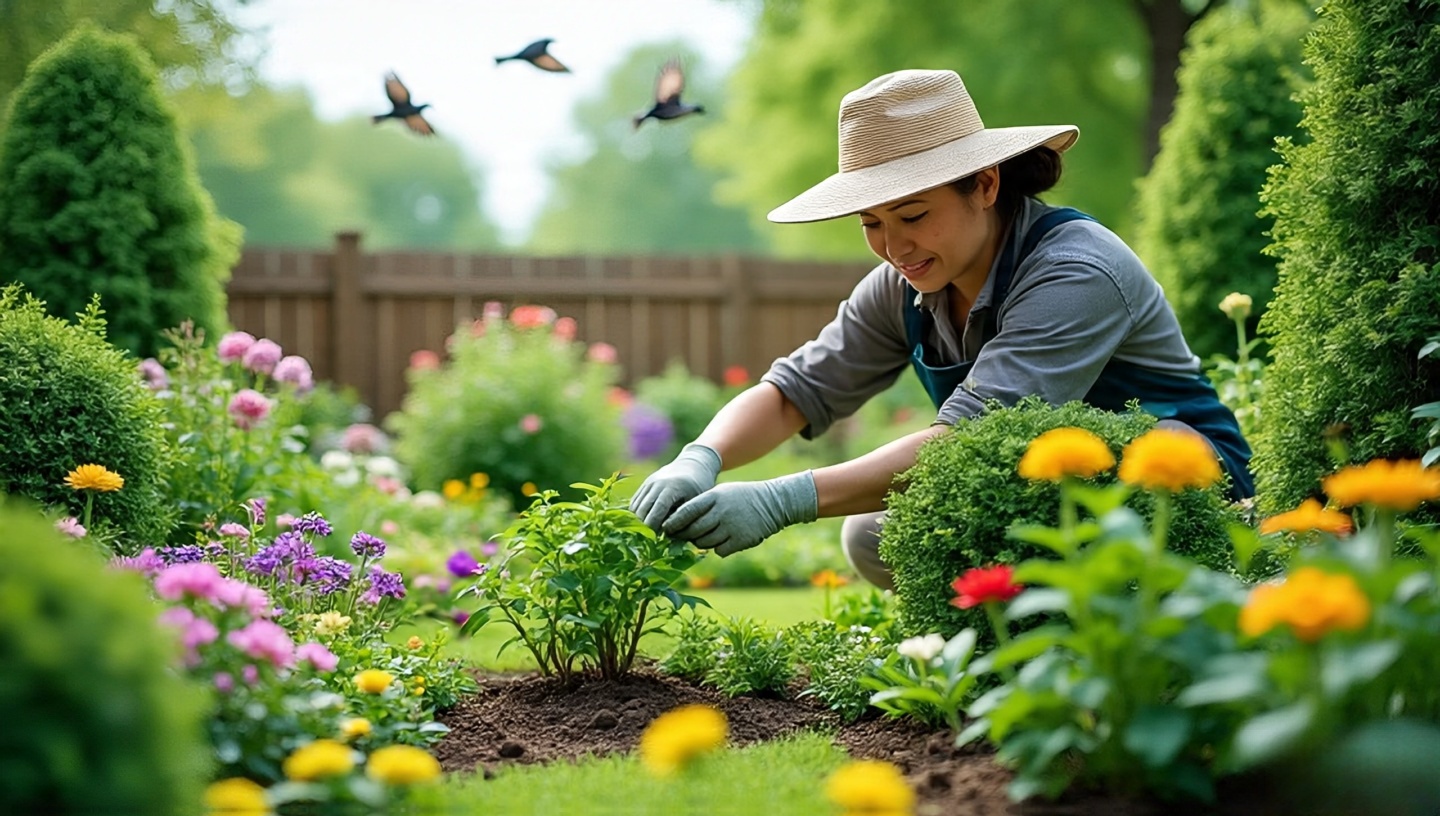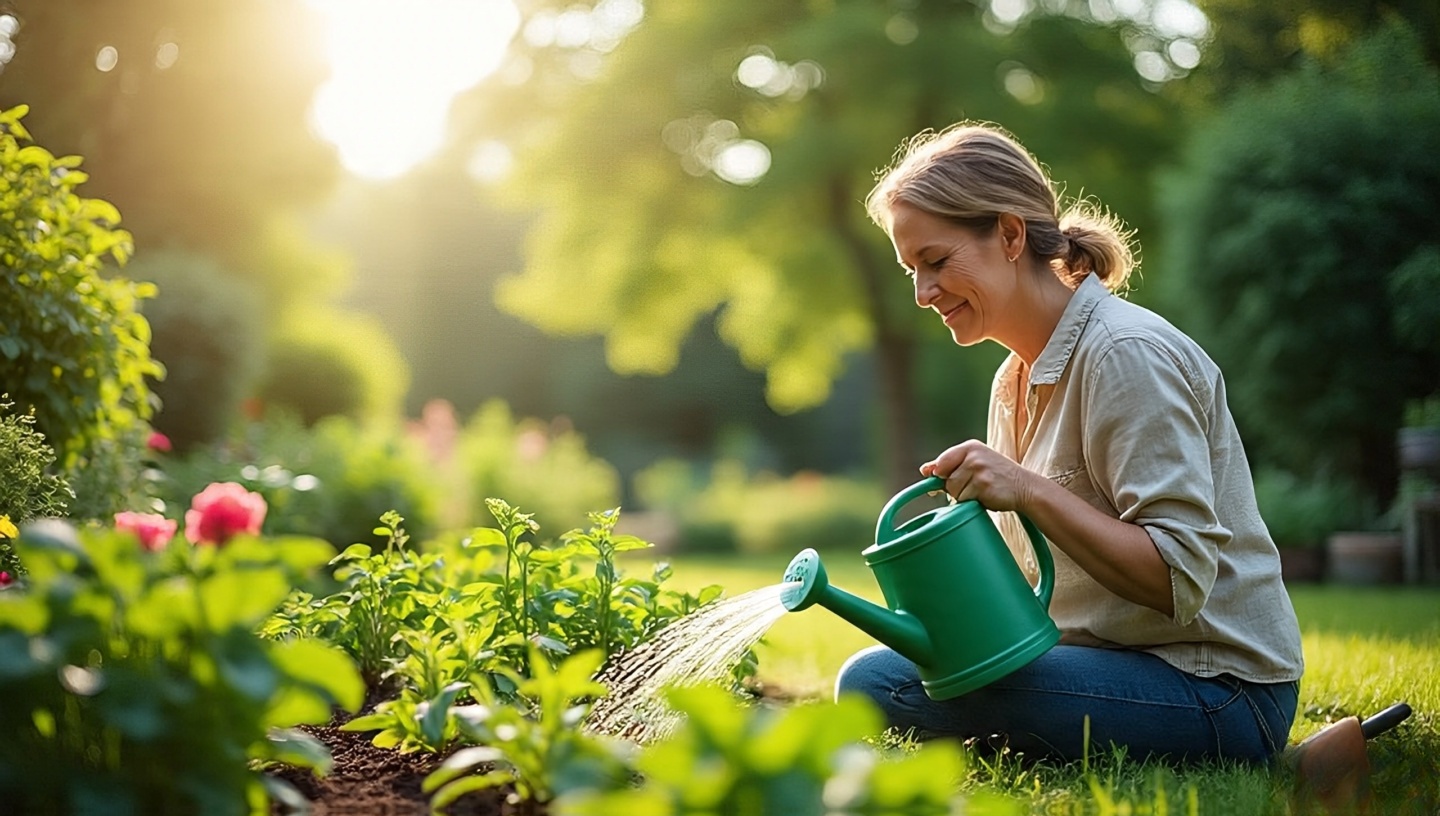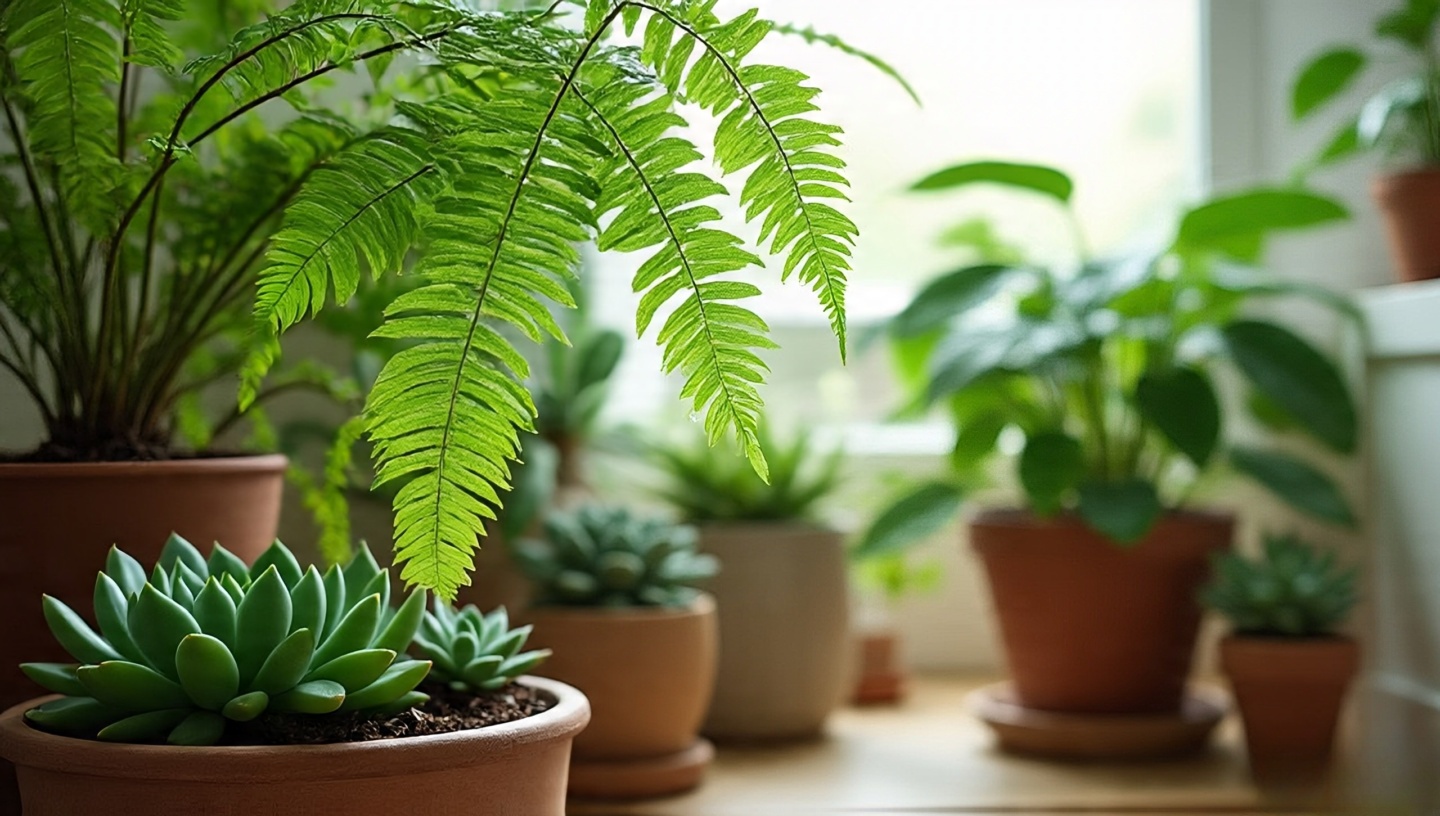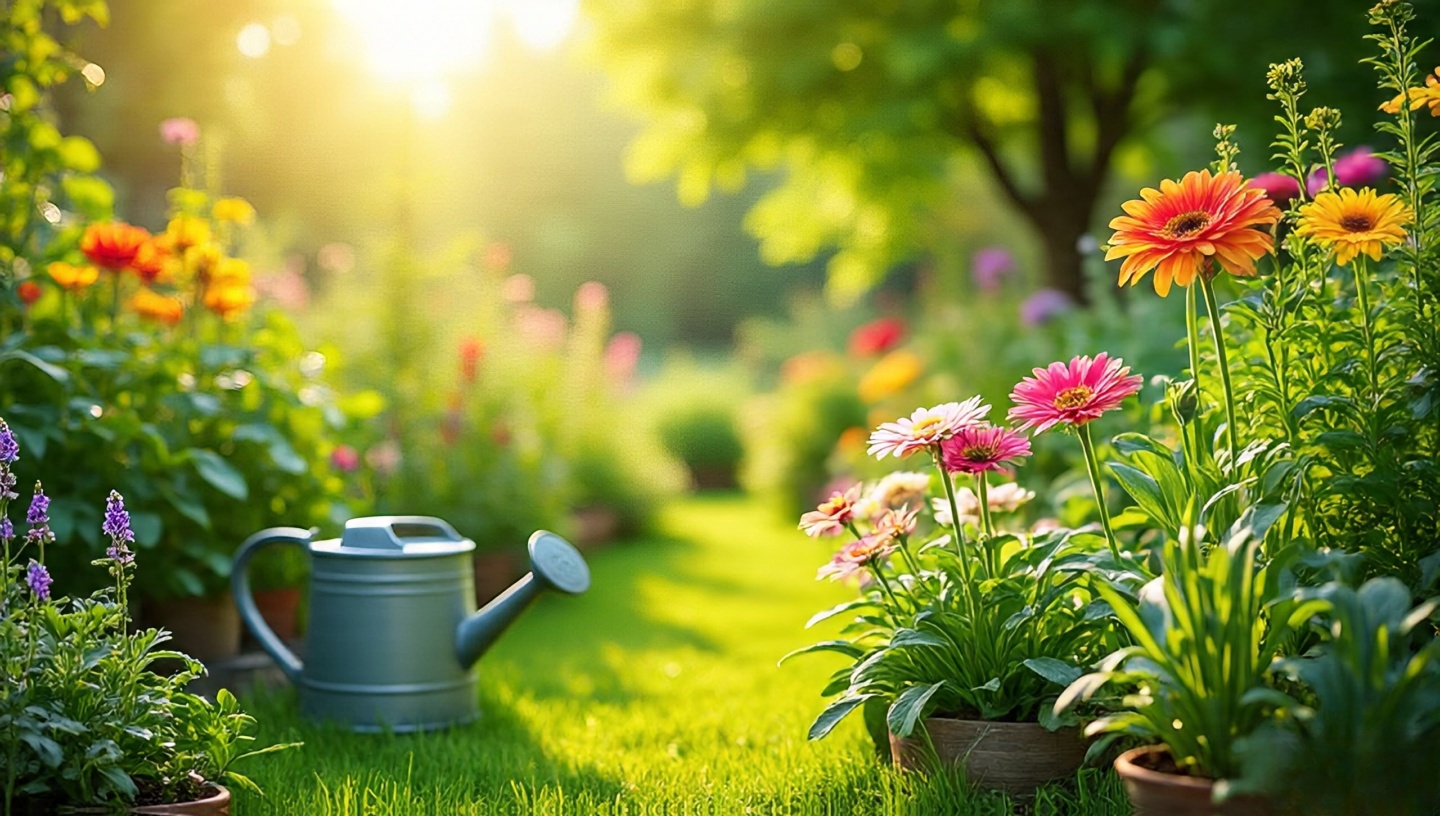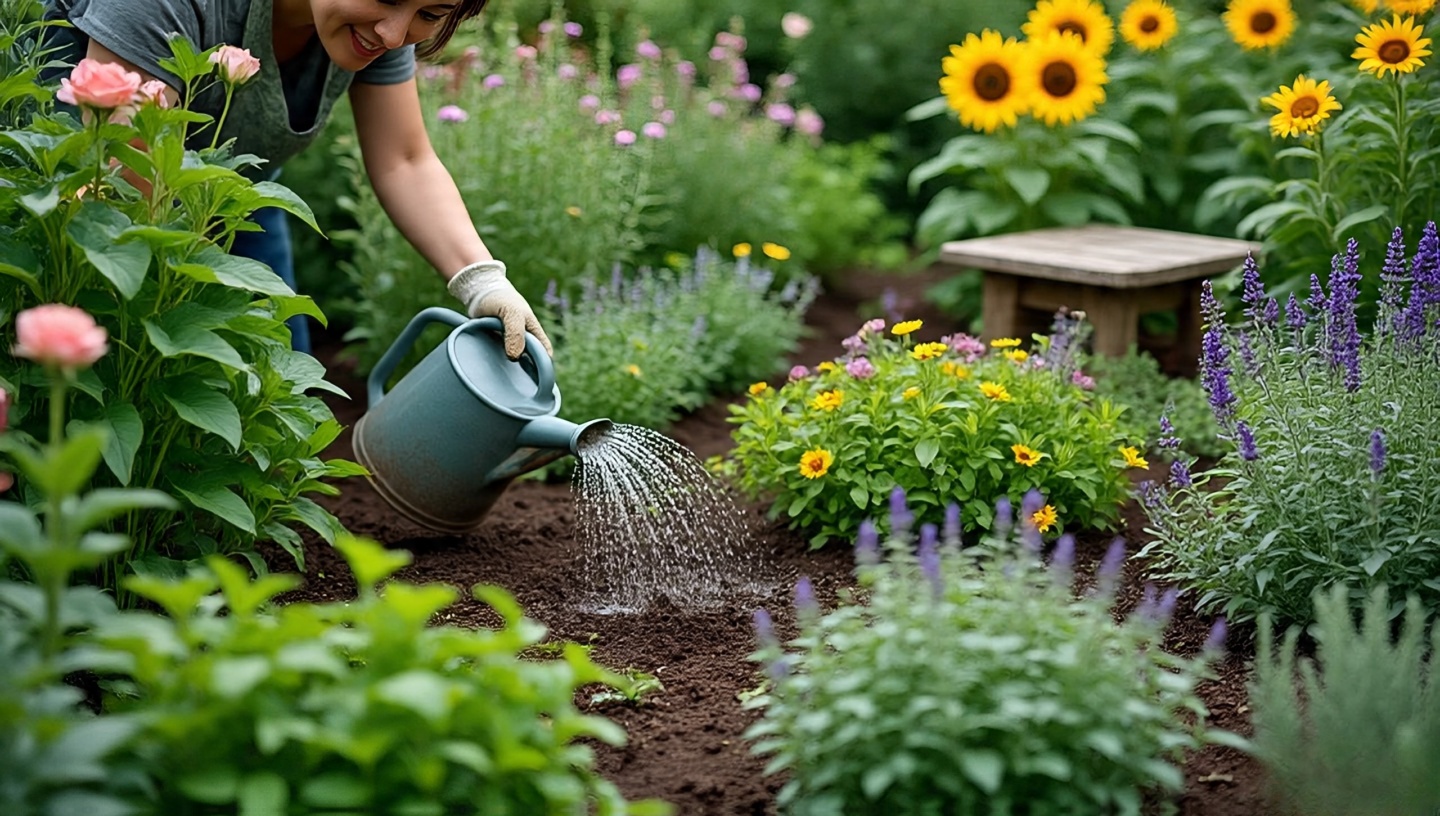Roohome.com – There’s a unique, mesmerizing magic in the art of gardening that captivates anyone brave enough to step into its colorful, nurturing realm. On the surface, it transforms soil into beauty but beneath the blooms lies an even more powerful gift: the ability to restore calm, spark joy, and heal the soul.
In this article, we’ll delve deeply into the enchanting aspects of gardening from the pure joy of watching a seed sprout, to the scientifically documented mental and physical health benefits of gardening. Together, we’ll explore how gardening cultivates beauty, nurtures resilience, and connects us to nature’s timeless rhythm.
1. Witnessing the Miracle of Growth in Your Own Garden
There’s nothing quite so magical as planting a seed and watching it transform. From the first green shoot breaking through the soil to flowers bursting in vivid color, each stage is a living testament to life’s delicate balance. That interplay between sunlight, water, and earth reminds us of the profound interconnection sustaining us all.
This sense of wonder of marveling at nature’s slow, steady development is at the heart of why many call gardening a form of magic.
2. Gardening as a Balm for the Mind and Body
Gardening is more than aesthetic it’s therapeutic, backed by science. Researchers have found that regular interaction with green spaces and gardening activities reduces depression, anxiety, and even body mass index, while increasing overall life satisfaction.
One compelling insight: simply viewing greenery like a garden outside a hospital window can aid recovery and reduce stress more than staring at a blank wall. For those who actively garden, the act of nurturing plants, feeling the soil, and engaging with nature helps sharpen focus, improve mood, and ignite a lasting sense of hope.
3. Cultivating Beauty in Harmony with Nature
Creating a garden is akin to painting a thoughtful blend of color, texture, and scent. When you choose plants intentionally say, pairing perennials with spring bulbs, or bright annuals with fragrant herbs you build an immersive landscape of sensory delight.
Each visit to the garden becomes a moment of quiet awe: petunias swaying, foliage whispering, and blooms opening nature’s art unfolding in real time.
4. Rooted in Seasons: Gardening as Connection
Gardening anchors us to nature’s cycles. Whether it’s feeling anticipation as you dig bulbs in autumn, marveling at seedlings in spring, or harvesting in summer, each act brings with it a pulse of seasonal energy.
That alignment with seasonal rhythm reminds us of life’s cyclical essence growth, rest, renewal which mirrors our own cycles of activity and repose.
5. Gardening Grows Memories and Community
Gardens are not just collections of plants they’re living archives of memories. Teaching loved ones to sow seeds, gathering around fresh-picked produce, or exchanging blooms with neighbors we stitch our stories into our gardens.
Years later, the sight, scent, or taste of homegrown basil or rose petals can transport us back to laughter-filled afternoons and shared moments under sunlit skies.
6. Patience, Resilience, and Personal Growth
Gardening teaches patience. A seed doesn’t become a plant overnight and neither do our dreams come to fruition at once. Just as plants need light, water, and care to flourish, our aspirations demand steady nurture over time.
Yet gardens aren’t always perfect. Pests, storms, or unexpected frost may damage your efforts. But like in life’s setbacks, these challenges encourage adaptation, learning, and renewed determination showcasing resilience in the face of adversity.
7. Healing Through Horticultural Therapy
More than casual gardening, horticultural therapy also called therapeutic or social horticulture uses structured gardening activities to support physical rehabilitation, mental health, and emotional well-being.
From helping elderly individuals improve cognitive function to supporting social engagement in schools or prisons, this approach exemplifies gardening’s power not just to decorate, but to deeply heal.
8. Growing Indoors: Houseplants as Everyday Magic
Even limited to indoor spaces, gardening works wonders. Caring for a houseplant even just one has been shown to improve mood, increase alertness, and raise feelings of autonomy and health.
Whether it’s a succulent on your windowsill or a fern by the table, nurturing living green life indoors brings soft, surprising magic to daily routines.
9. Key Aspects That Make Gardening Magical
- The magic of gardening and its timeless charm
- Therapeutic benefits for mental and emotional health
- Gardening as a mindful and stress-relieving activity
- Horticultural therapy for healing and rehabilitation
- Benefits of indoor plants for homes and workplaces
- Seasonal gardening and connecting with nature’s cycles
- Learning patience and resilience through gardening
- Personal growth and life lessons from the garden
Each of these aspects reflects how gardening enriches our lives, blending beauty, wellness, and personal fulfillment into a single, rewarding activity.
10. Deepening the Practice: Tips to Maximize the Magic
Engage your senses: Plant fragrant herbs, textured leaves, and brightly colored blooms to enjoy sight, scent, and touch.
Keep a gardening journal: Note planting dates, successes, missteps and your evolving feelings. Reflection enhances connection.
Try container or vertical gardening: Perfect for small spaces. Even a balcony can become a sanctuary of seedlings and herbs.
Add structure: Design your garden around paths, focal points, or themes (“calm,” “pollinator haven,” or “sensory garden”) to deepen both beauty and meaning.
Final Thoughts
The magic of gardening extends far beyond beauty it nourishes our hearts, soothes our minds, and echoes the cycles of life. By planting, caring, and reflecting, we cultivate not just growth but meaning, connection, and joy. Whether you’re a seasoned green thumb or just planting your first seed, the garden whispers its magic to all who listen.
